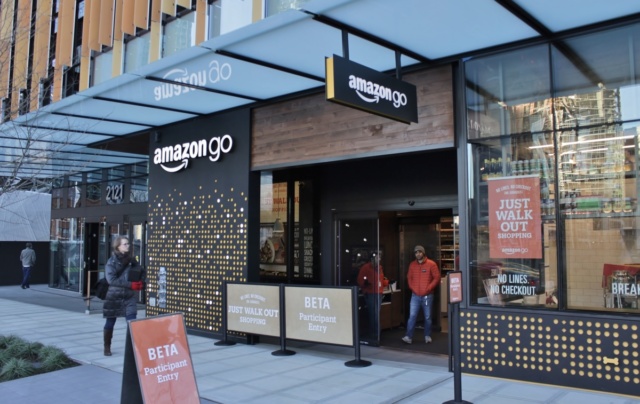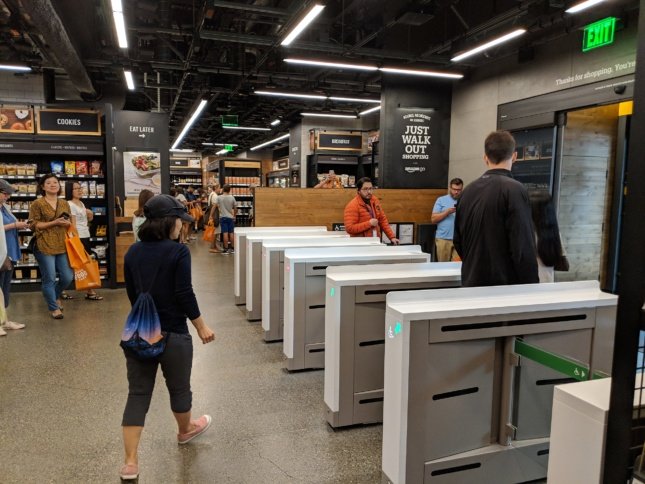
Imagine a world where artificial intelligence tracks your every movement. A world where buildings have minds of their own, learning your behaviors, and collecting data from you as you come and go. While existing technology has not yet reached sci-fi levels, a visit to an Amazon Go grocery store can offer you a peek into this possible future of retail design. This week Amazon announced its plans to open a new store in New York, the first of its kind on the East Coast, before opening nearly 3,000 more nationwide by 2021.
The company has already built out six Amazon Go stores in Seattle, Chicago, and San Francisco. The cutting-edge stores, as shown within its first locations, are characterized by visual simplicity, clarity, and hyper-functionality. Through the stores’ structural elements, including minimalistic facades, geometric configurations, and exposed raw materials, such as wood veneer and polished concrete, the interiors assume an industrial feel. They feature muted colors and black merchandise racks that give the stores a clean appearance as well. Meanwhile, ceiling cameras monitor shoppers as they wander through the aisles.
The stores are unique in that they are void of cashiers, cash registers, and self-service checkout stands. Customers only need to walk in, take what they need, and leave. As they swing through the turnstiles on their way out, Amazon automatically bills their credit cards. Within minutes, a receipt is sent to the Amazon app, giving customers a summary of what they bought, what they paid, and the exact amount of time they spent in the store.4

The stores, which depend on highly sophisticated image recognition software and artificial intelligence to function, are expected to drastically transform the retail experience in unexpected ways. Amazon began working on retail stores five years ago with the goal of eliminating consumer criticisms and complaints, such as struggling to find products and waiting in long lines. Since the first Amazon Go store opened last January in Seattle, it has received tremendous praise and success.
According to CNN, highly automated retail stores like Amazon Go are expected to become the norm within as little as 10 to 15 years. Research has shown that up to 7.5 million retail jobs are at risk of automation in the next decade, which will save retailers money on labor, as well as boost profits, but obviously cost retail workers their livelihood. Automated stores can facilitate the ordering and restocking process as cameras and AI track inventory in real-time. The removal of cash registers provides more space for inventory. Customer data can also be uploaded to the servers of each building, where retailers can present them with personalized discounts, offers, and other incentives.
While Amazon has confirmed plans to open an Amazon Go store in New York, its location has yet to be determined.
